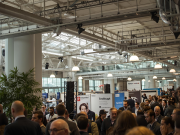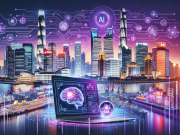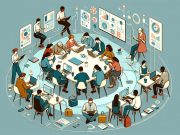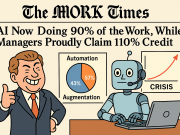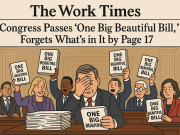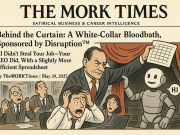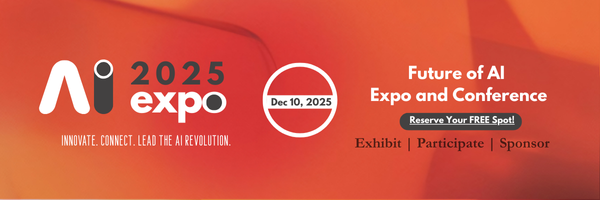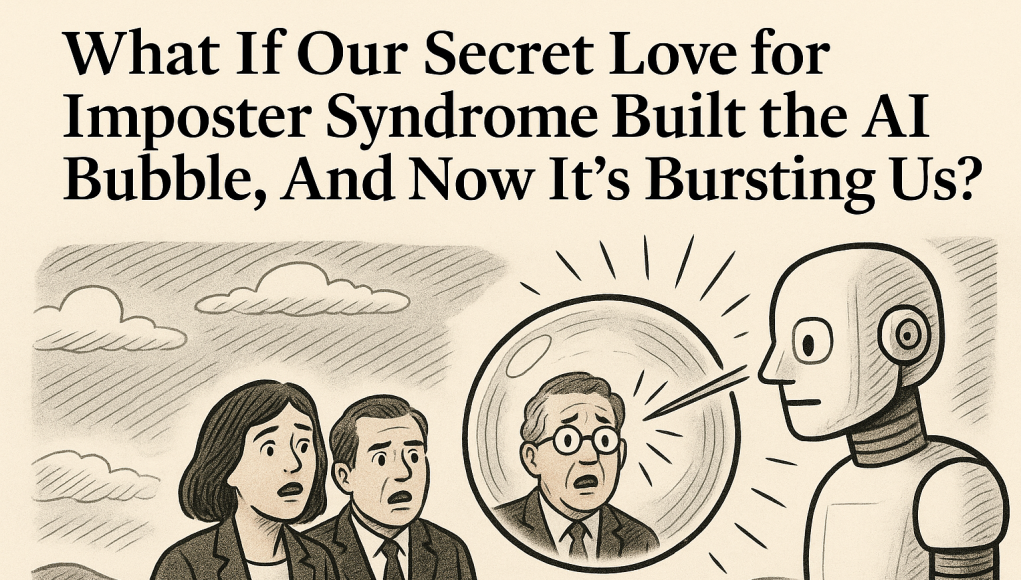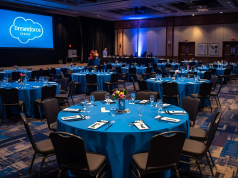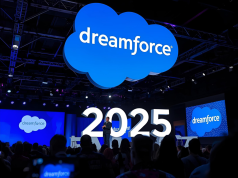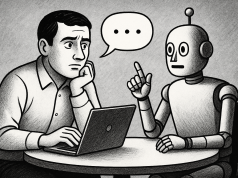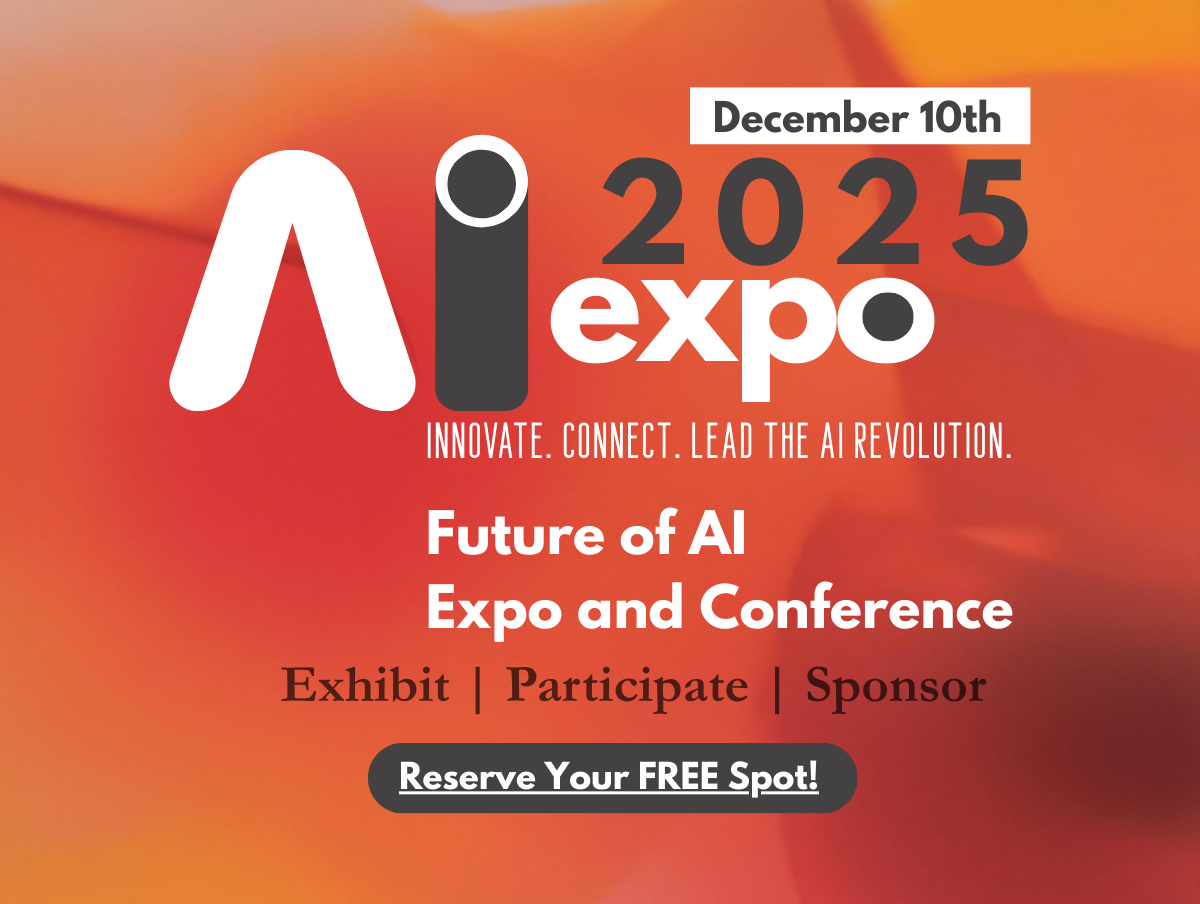Why our obsession with AI isn’t just about progress—it’s about how deeply we’ve undervalued the human journey
Something strange is happening in our boardrooms, classrooms, and browsers. Tools meant to support us are now leading us. Doubts meant to humble us are now defining us. And somewhere along the way, we stopped asking whether AI is taking over—and started assuming it should.
This isn’t just a story about tech. It’s a story about trust. In this three-part series, we’ll explore how our quiet love affair with imposter syndrome is reshaping economies, education, and even our sense of self. We’ll dig into the roots of our collective insecurity, trace how it’s quietly rewritten our priorities, and offer a new blueprint for building a future that centers humanity—not just hardware.
If you’ve ever wondered why it feels like everyone else has it figured out—or why machines seem more confident than people—this series is for you. Because reclaiming our place in the future starts with remembering: progress doesn’t require perfection. It just needs belief.
1. The Cult of Competence and the Machine We Let In
In 17th-century Japan, when a treasured teacup cracked, it wasn’t discarded. Instead, the break was filled with lacquer and powdered gold in a practice known as kintsugi—a quiet celebration of imperfection. The cup was not ruined; it was redefined.
In the 21st century, when the human spirit shows its cracks—uncertainty, inexperience, doubt—we don’t reach for gold. We reach for automation.
There is something telling, almost poetic, about the fervor with which we’ve embraced AI—not just as a tool, but as a solution to a problem we never quite named: the growing cultural discomfort with being in process.
We have not merely welcomed artificial intelligence into our workflows. We’ve enshrined it as savior—because somewhere along the way, we lost faith in ourselves.
The Quiet Collapse of Confidence
The story we tell about AI is one of efficiency: faster workflows, smarter analytics, better predictions. But beneath this surface lies a more fragile truth—one not about what AI is capable of, but about what we fear we are not.
At the core of modern professional culture is a widespread and oddly fashionable affliction: imposter syndrome. It is the creeping sense that one is only pretending to be competent—that eventually, someone will discover the fraud beneath the polished Zoom presence. This anxiety, once private and internal, has become communal and public.
And it’s no longer just something we confess to our therapists. We joke about it. We meme it. We wear it like a merit badge. “Everyone feels like a fraud,” we say. But when everyone feels like a fraud, the natural response is not to rediscover one’s voice—it’s to outsource it.
What AI promises, at least on the surface, is relief: No more staring at the blinking cursor. No more speaking up in meetings when your inner voice says you’re unqualified. No more battling self-doubt when a machine can “optimize” your thoughts.
The cost of this relief, however, is steep: we begin to place more faith in systems than in selves. And from that equation springs the most dangerous inflation of all—not economic, but existential.
A Devotion Born Not of Awe, But Anxiety
There is no shortage of evidence that we are overestimating the current capabilities of artificial intelligence. Models that hallucinate facts are mistaken for truth-tellers. Startups with vague roadmaps and charismatic founders attract billions in funding. Executives redesign entire business models around technologies they barely understand.
Why?
Because belief in the machine is often easier than belief in the mirror.
This isn’t about technophilia. It’s about emotional economics. AI gives us the illusion of infallibility at a moment when fallibility—especially our own—feels intolerable. And in a work culture that treats vulnerability as weakness, outsourcing our thinking becomes an emotional survival strategy.
We are not handing power to machines because they’re flawless. We are doing it because we are convinced we are not enough.
The New Religion of Optimization
There’s something almost theological about the way we discuss AI today.
It will see what we can’t. It will know what we don’t. It will never tire, never doubt, never “need a break.”
It is not just a tool in the modern economy—it is becoming a value system. The human traits most often seen as inefficient—deliberation, ambiguity, patience, even boredom—are precisely what AI is designed to override. And we have begun to see those traits not as costs of creativity, but as defects to be engineered out.
The danger of this shift isn’t merely economic or even ethical. It’s psychological. A society that puts efficiency above empathy, clarity above curiosity, and prediction above presence is not optimizing. It is flattening.
It is teaching itself to forget the beauty of being in progress.
This Isn’t a Tech Problem. It’s a Trust Problem.
Imposter syndrome was never about incompetence. It was about isolation. It flourishes in cultures where failure is punished and questions are seen as liabilities. In such a culture, the machine looks like an answer—not because it’s correct, but because it cannot blush.
And so we celebrate AI, not because it grows—but because it doesn’t doubt.
But growth without doubt is not human. And intelligence without doubt is not wisdom. If we continue down this path, we risk trading the slow, communal process of becoming—of learning, failing, adapting—for the fast, solitary act of automating away our discomfort.
We won’t just be automating tasks. We’ll be automating identity.
The Stage We’ve Set
This is the quiet crisis undergirding the AI moment. We’ve given up our agency not because we were forced to—but because we couldn’t imagine ourselves as enough.
When you believe you are always behind, you will always look outward for salvation. And in that moment of self-doubt, even the most imperfect algorithm can look like a messiah.
This is the culture we’ve built. The shrine of the machine stands tall—not because it’s divine, but because we have forgotten how to honor our own becoming.
2: The Price of Putting Ourselves Second
There is a strange silence spreading through classrooms, workplaces, and boardrooms—not an absence of noise, but of voice.
Ask a student to explain their thinking, and they gesture toward the chatbot. Ask an employee to take a bold stance, and they defer to the algorithm. Ask a policymaker to define vision, and they quote tech roadmaps rather than public will.
We’re not running out of ideas. We’re outsourcing belief.
The first signs were subtle: a generation of workers hesitant to speak up. Students who preferred templates over imagination. Leaders more fluent in tech lingo than in human pain points.
But now it’s louder. We are, culturally and structurally, learning to prioritize systems over selves—not because machines demanded it, but because we convinced ourselves we weren’t trustworthy enough.
This isn’t just a psychological phenomenon. It’s an architectural shift in how society defines value.
From Human Process to Productized Proof
In an age obsessed with “outcomes,” human process is quietly losing its place.
We want the essay, not the effort. The sales pitch, not the skill-building. The insight, not the messy learning that led to it.
This demand for polished output creates a vacuum of patience—a space where only machines can truly thrive. And so we invite them in. Not because we don’t value people, but because we’ve reshaped the rules of value itself.
The result? Schools, companies, and even governments subtly rewire themselves to accommodate the frictionless logic of AI, even when it means stripping friction from the human experience.
And the first thing to go? The space to grow.
Education as Prompt Engineering
Across schools, students are no longer just asked to solve problems. They are taught to prompt solutions.
“Write a good input, and the model will handle the rest.” On paper, it’s efficient. In practice, it removes the very muscle education was designed to build: the ability to wrestle with uncertainty.
We’ve traded reflection for results. Instead of guiding students to confront doubt and build resilience, we coach them to perform coherence through pre-trained responses.
In that shift, imposter syndrome gets institutionalized. Students learn to fear the blank page—and trust the machine. The work becomes performative. And so does the learning.
Workplaces Optimized for Output, Not Growth
Meanwhile, organizations once built to cultivate talent are becoming platforms to integrate systems.
Mentorship is replaced with dashboards. Mid-career experimentation is replaced with “AI-powered productivity boosts.” Meetings become less about exploring ambiguity, and more about summarizing certainty—usually with a chart, a model, or a bullet-point brief composed by a generative tool.
The worker is not asked to evolve. They are asked to adapt—quickly, seamlessly, and with minimal mess.
In such systems, the high-performing, high-empathy “Worker1” model we advocate at TAO.ai—someone who grows personally and uplifts their team—has little room to breathe. Because real growth takes time. And real empathy creates friction.
Both are liabilities in a culture that has put itself second to its own machinery.
The Loss of Human Infrastructure
Here’s the paradox: in automating so much of our “thinking,” we are under-investing in the infrastructures that make real thinking possible.
- We no longer fund workplace learning unless it comes with a badge.
- We downplay emotional intelligence unless it’s quantifiable.
- We cut professional development budgets to spend on AI licenses.
This is not cost-cutting. It’s soul-cutting. We’re stripping out the deeply human scaffolding—coaching, failure, reflection, second chances—that make individual and collective intelligence sustainable.
Strong communities, as we’ve always believed at TAO.ai, are recursive. They feed into individuals, who in turn strengthen the whole. But in a machine-optimized world, the loop breaks.
We replace community with throughput. We replace potential with predictive scores. And slowly, we stop expecting people to grow—because we assume the tools will.
Where This Leads
What happens when a culture forgets how to prioritize the learner, the struggler, the late bloomer?
We get:
- Education systems that produce compliant users, not curious citizens.
- Economies that chase the next model release instead of developing the next generation of thinkers.
- Leaders who fear ambiguity more than inaccuracy—and therefore act only on outputs that feel “safe.”
This is not a future we’ve chosen consciously. It’s one we’ve drifted into—one hesitant download, one quiet doubt, one skipped question at a time.
The Cultural Reckoning to Come
At some point, we will have to answer: What are we building toward?
Is it a society that believes deeply in the human journey—with all its awkwardness, errors, and grace? Or is it a society so anxious to appear “optimized” that it accepts stagnation beneath a surface of synthetic brilliance?
This is not a call to reject AI. It is a call to remember that tools should serve humans—not displace them from their own evolution.
Until we reclaim that principle, we are not building a smarter world. We are building a smaller one.
3. How to Do It Right
There’s an old proverb in African storytelling circles: “The child who is not embraced by the village will burn it down to feel its warmth.”
What we risk in this AI-powered moment isn’t technological failure. It’s a quiet, collective forgetting: that growth takes time. That learning requires struggle. That people matter, even when they’re unfinished.
Parts 1 and 2 explored the problem—how imposter syndrome made AI a stand-in for self-worth, and how our cultural choices have sidelined humanity in favor of machine-like perfection. This final part asks: What do we do instead?
The answer isn’t to slow down progress. It’s to redefine what progress looks like—using tools to lift people, not replace them. To shift from a culture that rewards speed to one that honors growth.
Here’s what that looks like in practice.
1. Normalize the Messy Middle
Progress is not linear. It looks more like a forest path—twisting, sometimes doubling back, always changing. But our current systems don’t reward that kind of journey.
We must make room again for:
- Unpolished drafts
- Projects that evolve through failure
- Career paths that zigzag before they soar
How to do it:
- Leaders should tell incomplete stories. Instead of only celebrating final outcomes, highlight the dead ends, the pivots, the near-disasters.
- In schools and companies, create rituals that celebrate “lesson wins” alongside “performance wins.”
This isn’t just about empathy. It’s about modeling a culture where growth is real, not curated.
2. Build Cultures That Measure Potential, Not Just Output
Our obsession with dashboards and OKRs has reduced human effort to metrics. But the most transformative outcomes often start as invisible seeds—confidence, creativity, curiosity. These take time to emerge.
How to do it:
- Shift from productivity metrics to trajectory metrics: Is this person growing? Are they learning faster than before?
- Create peer review systems that reward growth contributions—not just “wins,” but mentoring, knowledge-sharing, and community-building.
- Incentivize asking good questions, not just giving fast answers.
A strong culture isn’t one where everyone performs. It’s one where everyone grows.
3. Train People Before You Tool Them
In many organizations, the ratio of budget spent on AI tools vs. human training is deeply lopsided. We deploy technology faster than we equip people to use it with wisdom.
How to do it:
- For every AI tool deployed, mandate a human capability plan: what will this tool free people up to do more creatively?
- Offer “slow onboarding”: let employees experiment, journal, and reflect—not just click through a tutorial.
- Center “worker enablement” in your digital transformation strategy. Invest in context, not just control.
AI should amplify human value—not replace the messy, powerful ways we learn.
4. Practice Cultural Resets Through Storytelling
Cultural change happens slowly—and often invisibly. One of the most powerful levers we have is storytelling.
How to do it:
- Host Failure Fests, like Finland’s Day for Failure, where leaders and teams share what went wrong—and what they learned.
- Integrate stories from cultures that embrace becoming: kintsugi in Japan, griots in West Africa, or even the Indian concept of “jugaad” (creative improvisation).
- In product teams, include “empathy logs” alongside bug logs—what did this feature feel like to build or use?
Storytelling is not a distraction from data. It is the context that makes data meaningful.
5. Lead with Compassion, Not Competence Theater
One of the greatest dangers in the AI era is the pressure to always appear certain. But certainty isn’t leadership. Courage is.
How to do it:
- Normalize saying “I don’t know” at the highest levels.
- Encourage reflection over reaction.
- Teach teams to prioritize alignment over answers—what matters most, not just what works fastest.
The “Worker1” we envision at TAO.ai isn’t perfect. They are compassionate, driven, humble, and constantly evolving. They are not afraid to ask for help—or to lift others as they climb.
Conclusion: This Is Not the End—It’s a Return
We didn’t set out to replace ourselves. We just got tired. Tired of doubting. Tired of pretending. Tired of being asked to perform perfection in systems that reward polish over process.
But now, standing at the edge of this AI-powered era, we have a choice. Not between man and machine. But between surrender and stewardship.
Because this moment isn’t just about what AI can do. It’s about what we choose to value.
Do we build a future optimized for frictionless results? Or one that honors the messy, magnificent work of becoming?
At TAO.ai, we bet on the latter. We believe strong individuals don’t just power strong companies—they build resilient communities, recursive ecosystems, and cultures where people don’t need to fake their competence. They grow into it.
So here’s to cracks filled with gold. To questions asked out loud. To talent grown slowly, with care. To tools that serve the worker—not the other way around.
Let the machines compute. We’ll keep choosing to become.

